Coronagraphs
Classical Lyot
Pupil Masks
Two pupil masks are currently available, in addition to “open” (no mask).
fwpupil Position |
Description |
abs. throughput |
design file |
scale in telescope pupil [m/pix] |
scale at coronagraph pupil [mm/pix] |
|---|---|---|---|---|---|
open |
No mask, just the telescope pupil. Note: design file includes mask over bump. |
100% |
0.0067528 |
0.0093501 |
|
bump-mask |
Undersized pupil, oversized central obscuration, oversized spiders, and mask over bump |
86.75% |
0.0067528 |
0.0093501 |
|
fat-spider |
Same as bump-mask, but one extra-oversized spider. Intended for kernel-phase type WFS. |
Focal Plane Masks
There are two chrome dots on glass plates. Note: optical densities are estimated from standard chrome.
Small spot: 272 um diameter. fwfpm position: lyotsm
lambda [um] |
spot radius [lam/D] |
opt. dens. |
|---|---|---|
0.600 |
3.285 |
5.0 |
0.656 |
3.00 |
4.75 |
0.700 |
2.82 |
4.56 |
0.800 |
2.46 |
4.11 |
0.900 |
2.19 |
3.67 |
1.000 |
1.97 |
3.22 |
Large spot: 453 um diameter. fwfpm position: lyotlg
lambda [um] |
spot radius [lam/D] |
opt. dens. |
|---|---|---|
0.600 |
5.47 |
5.0 |
0.656 |
5.00 |
4.75 |
0.700 |
4.69 |
4.56 |
0.800 |
4.10 |
4.11 |
0.900 |
3.65 |
3.67 |
1.000 |
3.28 |
3.22 |
Lyot Stops
We have experimented with three Lyot stops with different characteristics. The labels “Large” and “Small” here refer to the clear aperture, i.e. large means a large clear aperture and therefore higher throughput. In practice we have used only LyotLg1 for observations. LyotSm is presently removed from the instrument.
parameter |
value |
notes |
|---|---|---|
fwlyot Position |
LyotLg1 |
|
Throughput |
63.8% |
not incl. FPM |
Image |
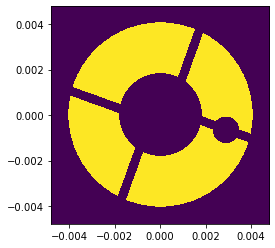
|
|
Outer Diam. |
7.020 mm |
at 9 mm pupil plane |
Inner Diam. |
4.620 mm |
|
Spider Width |
0.383 mm |
|
Bump Diam |
1.149 mm |
|
FITS file |
||
FITS scale at M1 |
0.0067528 |
m/pixel |
FITS scale at fwlyot |
0.0093501 |
0.0093501 |
DXF File |
parameter |
value |
notes |
|---|---|---|
fwlyot Position |
LyotLg2 |
|
Throughput |
57.3% |
not incl. FPM |
Image |
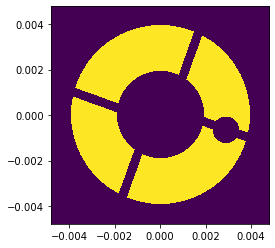
|
|
Outer Diam. |
8.041 mm |
at 9 mm pupil plane |
Inner Diam. |
3.600 mm |
|
Spider Width |
0.383 mm |
|
Bump Diam |
1.149 mm |
|
FITS file |
||
FITS scale at M1 |
0.0067528 |
m/pixel |
FITS scale at fwlyot |
0.0093501 |
0.0093501 |
DXF File |
parameter |
value |
notes |
|---|---|---|
fwlyot Position |
LyotSm |
removed from instrument |
Throughput |
33.35% |
not incl. FPM |
Image |
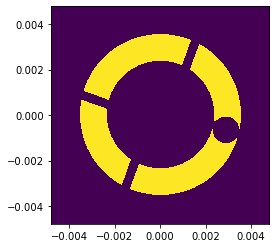
|
|
Outer Diam. |
7.800 mm |
at 9 mm pupil plane |
Inner Diam. |
3.800 mm |
|
Spider Width |
0.383 mm |
|
Bump Diam |
1.149 mm |
|
FITS file |
||
FITS scale at M1 |
0.0067528 |
m/pixel |
FITS scale at fwlyot |
0.0093501 |
0.0093501 |
DXF File |
PIAA Classical Lyot Coronagraph (PIAACLC)
Phase-induced amplitude apodization (PIAA) optics reshape the beam in the pupil and focal planes, enabling more starlight suppression at low angular separations and higher throughput at large angular separations.
Inverse apodization optics after the focal plane mask correct for off-axis field effects to remove comatic distortions on companions. Inverse PIAA optics are identical to forward PIAA optics. Optical path according to naming convention is PIAA0->PIAA1->fpm->iPIAA1->iPIAA0.
The process of pupil remapping before and after the focal plane is illustrated in Guyon et al 2010:
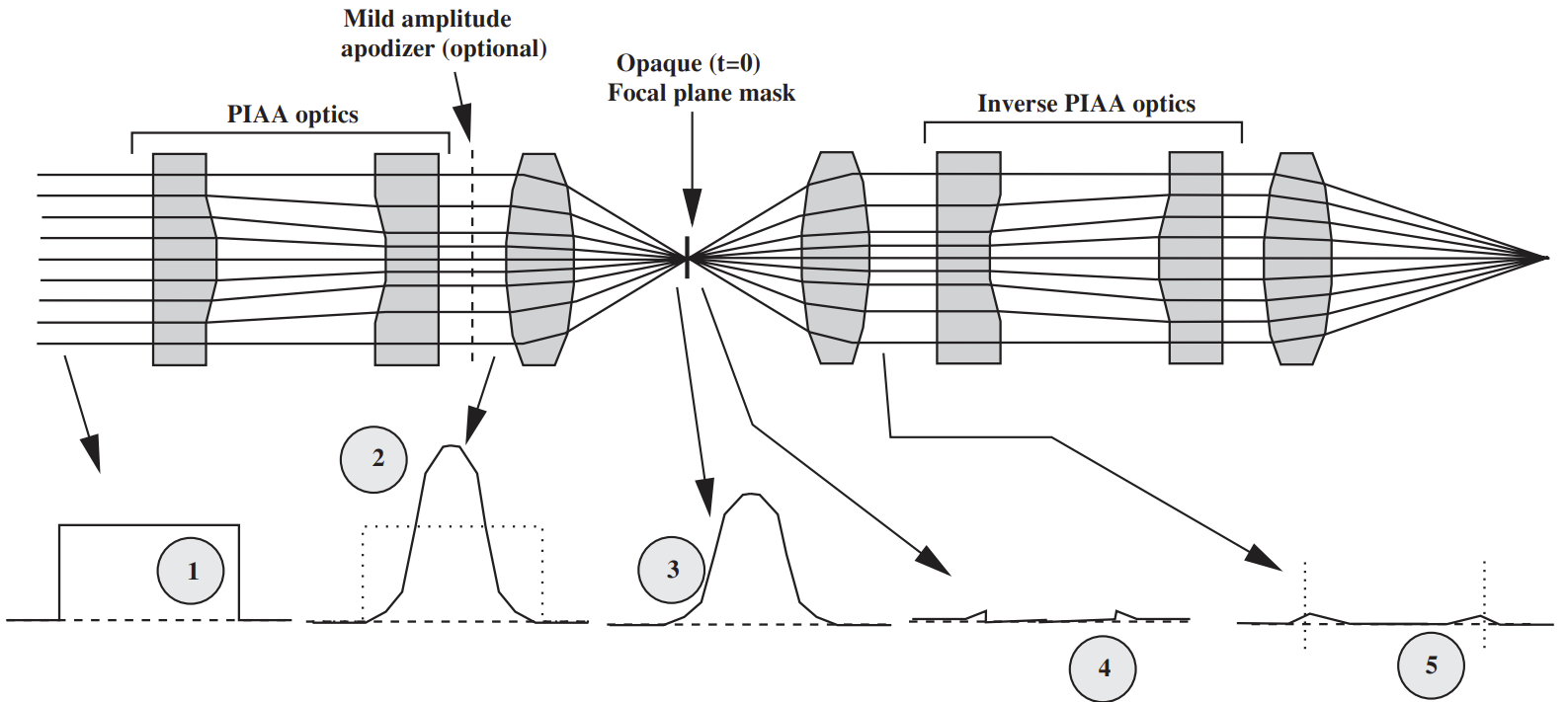
Optic name |
Clear aperture diameter (mm) |
design file |
scale in pupil [m/pix] |
Height map (um) |
|---|---|---|---|---|
PIAA0 |
10 |
0.151e-5 |
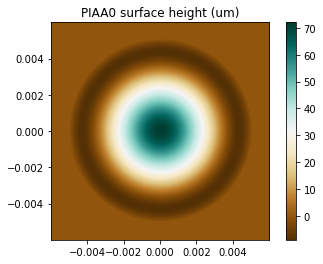
|
|
PIAA1 |
10 |
0.151e-5 |

|
Coronagraph performance simulations
656nm simulations (λ/D = 20.81marcsec, BW = 651nm-661nm) |
900nm simulations (λ/D = 28.56marcsec, BW = 855nm-945nm) |
|---|---|
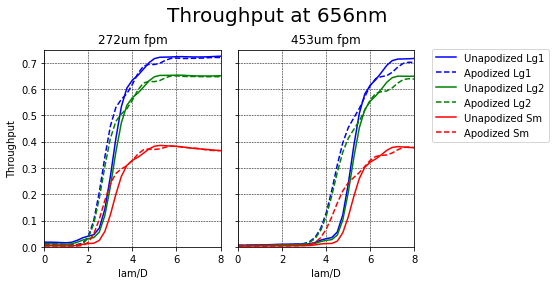
|
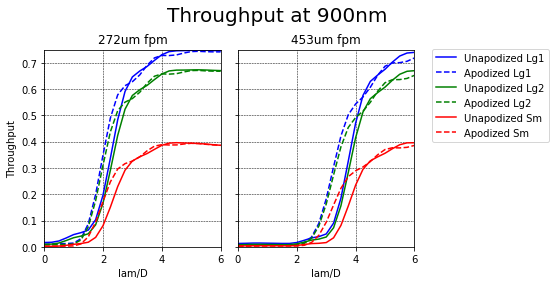
|
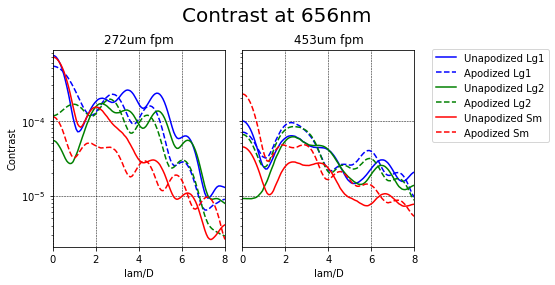
|
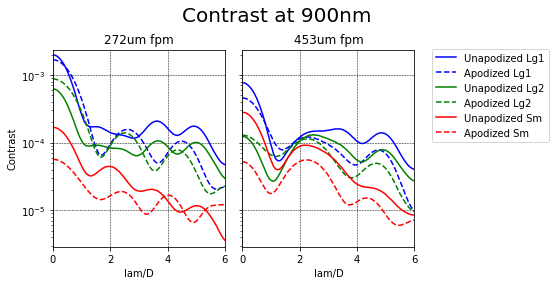
|
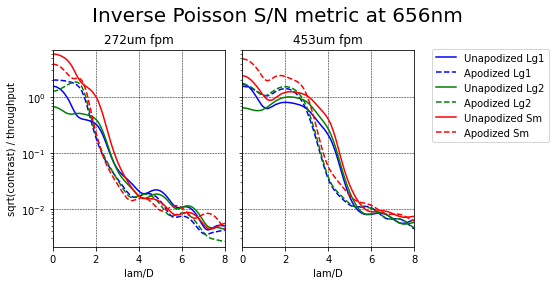
|
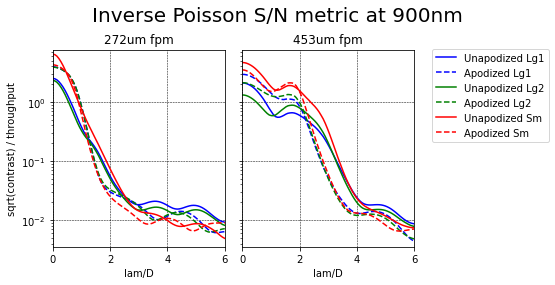
|
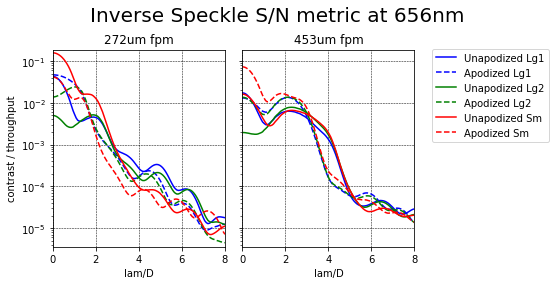
|
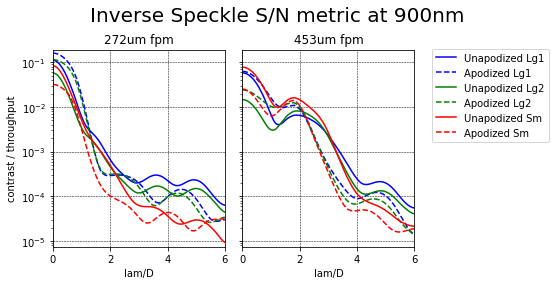
|
Vector Apodizing Phase Plate (vAPP)
To be documented.